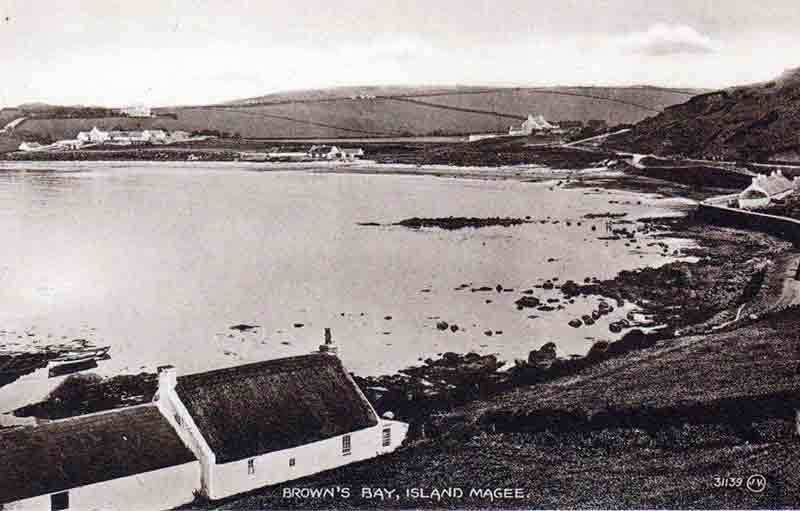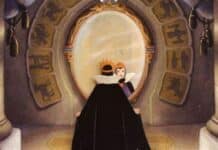Here at Spooky Isles we have briefly looked at the controversy surrounding the Islandmagee Witch Trials of County Antrim in the early 18th Century, as well as the subsequent outcry over inciting Devil worship by unveiling a plaque to the women involved. As the main opposition, Jack McKee passed away in recent months, there may be a further push to get the memorial put in place.
With this in mind, JANET QUINLIVAN took a closer look at the back story to the whole event to see if indeed these women are worthy of recognition some 300 years later.

Ok so we know this was the only group trial for witches and also the last in the whole of Ireland, with most of the trial focused on young Mary Dunbar who moved into her late aunt’s home. I want to focus on the happenings before Miss Dunbar moved in and what happened to Mrs. Haltridge. Was it a poltergeist, demonic activity or really black magic of the witches?
In 1710 Mrs. Haltridge was living with her son and daughter in law in her home that she shared with the late Reverend John Haltridge who she lost some years previous. The activity began in this year with some simple signs of poltergeist activity such as bed clothes moving, curtains opening and soon moved to turf and stones being thrown at her bed.
In December of 1710 things took a strange turn. While sitting in front of the fire in the kitchen at dusk Mrs. Haltridge witnessed a young boy of about 11 come in the door and sit next to her. He had black hair, wore an old and torn vest and a cap. He also had a large and trailing dirty blanket wrapped around him which he used to cover his face. She offered him tea and began to ask him questions, was he cold, what was his name, was he hungry, where did he come from? With that the boy was said to have leapt from the chair and begin to dance around the kitchen. He then opened the door and ran into a cow shed nearby. Mrs. Haltridge called her servants and sent them to find the child.
After much searching of the shed they found no boy. As they arrived back at the house the boy appeared beside them, they tried to catch him but he just danced around them. When one of the servants noticed one of young Master Haltridge’s hunting dogs returning home, he said ‘The young master is home’ and the boy disappeared.
The boy wasn’t seen again for some weeks, although Mrs. Haltridge continued to experience many signs of poltergeist activity in what the family called ‘the haunted room’. On the 11th of February 1711, Mrs. Haltridge lay in bed reading her book ‘Sermons of the Covenant’. She lay the book beside her and when she went to pick it up again after a few minutes the book was nowhere to be seen.
She searched the whole room but could not find the book. Soon the boy appeared outside one of the windows, he broke the window and revealed the book to one of the servant girls Margret Spear. When Margaret asked him if he could read the very thick book the boy replied ‘of course I can the Devil taught me’. With this Margaret exclaimed ‘ The Lord bless me from thee, though hast got ill lear (learning)’ The boy said she may bless herself all she liked but it would not save her. It’s said he then produced a heavy sword from the massive blanket around him and threatened to kill all in the house. The young servant ran to a nearby parlour and locked herself inside.
Watching him from the window she seen him try to steal a turkey from the gardens. As the boy tried to kill the turkey with his sword he dropped the book in the struggle and the bird escaped. Soon the boy was searching for the fallen book, digging a hole in the lawn with his sword. When another servant appeared and asked what he was doing he said he was preparing a grave for the corpse soon to leave the home. The lad then laughed and leapt over the wall and was gone.
Mrs. Haltridge in her fear called on her husband’s church for help. Minister Rob Sinclair and two of his elders came to house to pray and this is how they spent most of their time. Mrs. Haltridge went to bed as normal in the hopes the prayers would help her. Minister Sinclair’s prayers were disturbed by the screaming of Mrs. Haltridge and when he rushed to her room she complained that she felt she was stabbed in the back and could no longer stay in the ‘haunted room’. After she moved rooms the pain continued and grew and she died on the 22nd of February 1711
On the 27th OF February 18-year-old Miss Mary Dunbar, the niece of Mrs. Haltridge, moved in to keep her cousin’s wife company after such horrific events. She moved Castlereagh to the property and her first night there was the beginning of the end for this story.
On the night of her arrival Miss Dunbar retired to bed with a friend to discover that her trunk was open and many of her clothing items were missing. Upon searching she discovered that they were thrown around the house. We know she became out of control with swearing, throwing, threats and vomiting glass, feathers etc. She even claimed to have seen the boy her aunt had described and also an old lady called Miss Ann, but things were different with Mary.
One night she claimed to see 3 women in her room and they stabbed her in the thigh. Soon after she claimed to see all 8 women in her room discussing how to curse her. This girl was also said to have suffered terrible fits when any clergy members visited the home. She was able to describe and name 7 of the women and an 8th she described as blind of one eye. She named them as:
Janet Liston, Elizabeth Sellar, Kathrine McCalmot, Janet Carson, Janet Mean, Jane Latimer and Margaret Mitchell.
They were arrested and appeared before Carrickfergus court with two judges, Judge Upton and Judge McCartney. Evidence produced included the many household items that she vomited and also statements from the servants and family. Miss Dunbar however failed to give evidence. She claimed the day before the trial that the ‘witches’ had come to her in a dream and told her that she would never be able to say anything in court against them, that day she was struck dumb.
Judge Upton asked the Jury to find the women not guilty, he says that these women regularly attend church and also that one girl’s visions alone cannot be used as solid evidence. However, his colleague Judge McCartney felt otherwise and asked the Jury to find them guilty. These women were poor, some disabled and some smoked and/or drank (frowned upon at that time). The Jury did not take long in coming to their deliberation of ‘Guilty’
As we know the women spent one year in jail and 4 turns in the stockade on market day. It was a very lucky thing for them that they were tried by Irish law and not British. The sentence they received was normal for a first time offence of witchcraft in Ireland. In Britain a first time offence was punishable by death.
In 1718 its recorded that Judge Upon committed suicide, whether or not it related to this case we will never know. Almost all of the documents surrounding the women afterwards were burned in the Irish civil war.
Dr. Andrew Sneddon of the university of Ulster researched the trial for part of his book ‘Witchcraft and Magic in Ireland 1586-1946’. He believes that Miss Dunbar being new to the area wanted to make a name for herself and using the term ‘possession’ she could literally get away with anything.
Typically, in Ireland most magic and misfortune was normally put down to the fairies or little people. Witches were never a threat, it’s something brought along with the Presbyterian settlers from Scotland to the Island and most of these trials took part in English or Scottish settlements. Scotland at that time outweighed England in the number of women executed for witchcraft with the recorded at 3800.
So was Mrs. Haltridge the victim of some black magic, did she have a demonic haunt or maybe even a poltergeist? Was Miss Dunbar playing a silly game to get a bit of local fame or was she truly tortured by 8 evil old crones?
I’ll let you decide for yourself.







